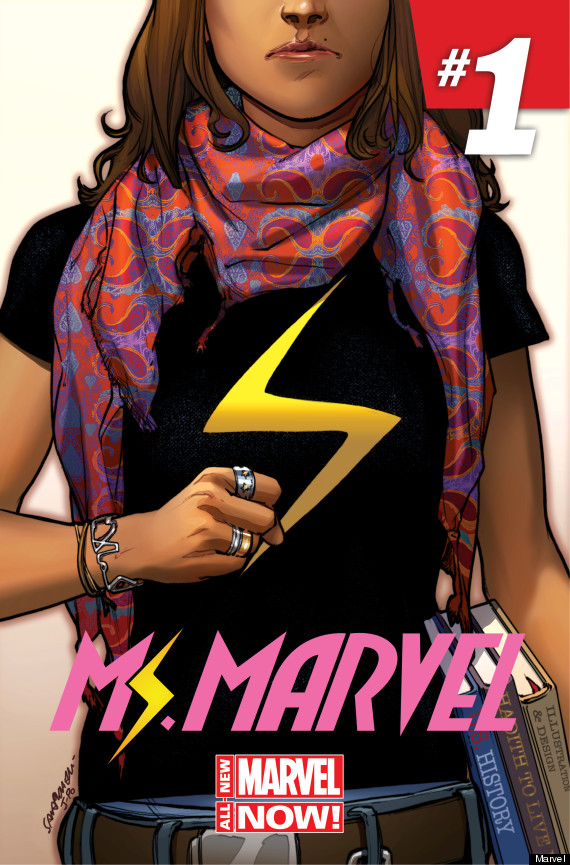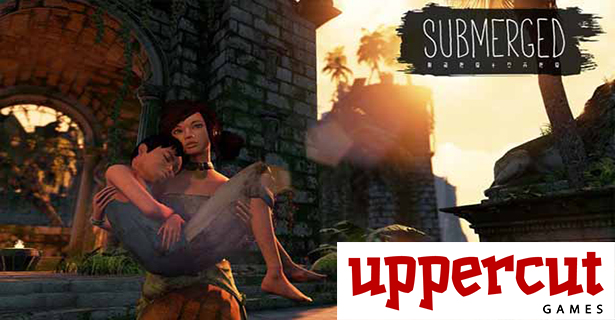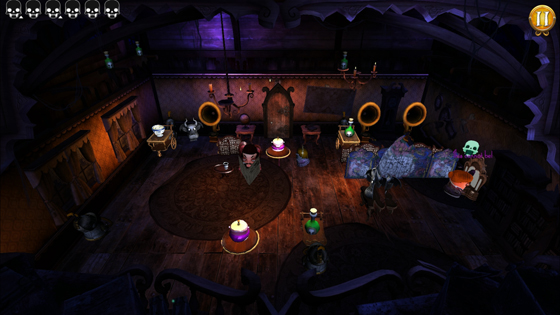Power Hour Reviews are a new NYMG feature in which we spend one intense hour playing newly released games in order to get a sense not only of game mechanics and characterization, but narrative as well. Let us spend our time first, so that you don’t have to waste yours.
During one of the attempts of our recent podcast that wasn’t, I confessed that I love Suda 51’s games, no matter how silly or weird. I have a thing, a need, and they fill it. Yes, the first sight of Scarlett the busty nurse made me roll my eyes, but like Killer 7, the game is so stylized that it’s like getting mad at a painting. I’m just not affected in the same way I often am with other games, because there’s no attempt here at realism. From the foundation of style through story through gameplay, everything is hyperreal, surreal, crazy — and unapologetically unrealistic.
Also, once you start figuring things out, it’s a damned good time… but not quite as good as I’d hoped.
I went a little over the “hour” in our power hour so I could finish the first major mission, look around a little, and complete a gigolo mission in order to deliver a brief report on the front-end experience of Killer is Dead, and I’ve come away with the feeling that this is a game that’s somewhere in between. It’s not quite what it could be, maybe not quite what it should be, a game that has a mixed identity at every level: in gameplay, in story and character, in action, in everything but style. Killer is Dead is busting out all over with style.
But what to do with all that style? A tough question. For the beginning of Killer is Dead, I perpetually felt like I was right on the outside of a great conversation — I could follow everything, but I was never really engaged. In the first, introductory mission, the player guides Mondo through the assassination of a kidnapper. The controls, which are slowly unspooled through the game’s beginning, here are limited to the analog sticks: you run, you dodge (if you want), and Mondo helpfully blocks gunfire with his sword (thanks, Mondo!). I zigged, I zagged, I listened to some dialogue I didn’t fully understand, I saw a lot of cool shadows, some weird stuff happened that I won’t spoil, and then bam! Mission over.
I got a B.
I sat for a moment, staring quizzically at the screen. Am I so bad with the left stick? Had I gone momentarily stupid? I had one job! Had I zigged too much? Extra zag? Should I have run straight? Been faster? I still have no idea what that was about — maybe Suda just felt like kicking my ego in the face. That’s fair. I moved on to a hot and heavy moment between Mondo and his lady that was interrupted by a call to violence. Fought some Wires, the game’s primary enemy. Witnessed some real strange conversations that I didn’t really understand. Piddled around. Entered the game’s first major mission, which kicked off with more strange conversation… and then the game really got going.
…and I was still left a few steps behind. But I’ll get to that.
The combat in Killer is Dead is pretty clear, though I’m not particularly a fan of the way it’s presented in the tutorials (or of the things that are left out, like how one gets revived by one’s assistant; turns out you just press X super fast). Hack, slash, dodge, shoot — standard fare, with a few special touches, like the ability to finish enemies off in such a way that you choose what they drop. The controls here are smooth and sensible, at least in my hands, and I enjoyed most of the fighting. It’s straightforward, without too many bells and whistles, though in the beginning, it feels very simplistic — almost dissatisfyingly so.
However, when it came to everything else? The game is by turns extremely informative and wildly withholding. It’s not unlike every bad relationship I’ve ever had, to be honest. This was a world of shadows and darkness, demons and cyberware, and I could never quite enter (note: even later in the game, many elements are elusive). I loved the conversations, the characters, the reactions, the scenes (mostly), but I wanted a perpetual rewind button so I could go back and search for the key I’d so obviously missed.
Killer is Dead is an exercise, like so many of Suda’s games, in art and violence, and it pulls heavily from pop culture. I could draw visual and narrative comparisons to a dozen shows, books, and movies, and while the influences are clear, what’s going on in the game isn’t always so clear, and I found that a little frustrating, and for more than that first hour.
As for the more controversial elements, like the gigolo missions: perhaps a bit overblown. Yeah, you’re tasked with manipulating women with your bedroom eyes (sunglasses?) and gifts in order to get awesome power-ups (and to bone, naturally), and it’s all terribly silly and should invite a lot of discourse about the male/female dynamic in gaming, but right now I can’t even rouse myself to be at all irritated about the rhetoric of the missions because they’re just so damned boring. If I didn’t want all the things, I’d skip them, and not only because I get real tired of staring at digital tits. The gigolo missions are repetitive, overly simplistic and still time-consuming, and have no redeeming factors whatsoever beyond loot.
It’s not even good material for titillation. Surely we can do better. I’ve seen the Internet. I know what’s out there.
All that aside, the combat is fun without being overly complex, the missions are interesting (but are starting to feel like well-trod ground), and the game is damned strange and more than a little mysterious. It’s worth a play for the Grasshopper fan, but I can’t recommend it without hesitation, and I’m sure I’ll have a lot to say over the next few weeks about the characters and narrative choices.




